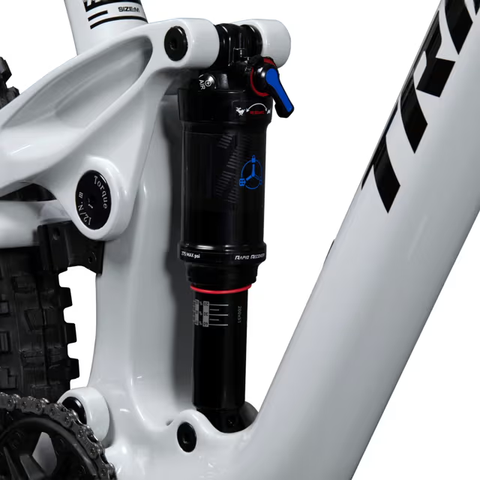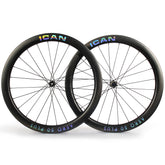Enduro vs. trail bike
Write in front:
Enduro bikes and trail bikes fall into the category of mountain bikes, but there are differences between the two types of bikes. They are suitable for different types of mountains. Based on ICAN Cycling's existing mountain bike models, we would like to describe the difference between the trail bike (P1) and the enduro bike (P9) .


Der Unterschied zwischen Enduro-Fahrrad und Trail-Fahrrad
Wenn Sie neu im Mountainbiken sind oder auch wenn nicht, könnten Sie durch den Unterschied zwischen einem Trail-Fahrrad und einem Enduro-Fahrrad verwirrt sein.
Es ist verständlich, dass Verwirrung aufkommt, denn auf den ersten Blick sehen beide Stile ziemlich ähnlich aus. Wenn Sie jedoch genauer hinschauen, werden Sie schnell die Unterschiede erkennen und herausfinden können, ob Sie ein Trail-Fahrrad oder ein Enduro-Fahrrad benötigen. Setzen Sie sich hin, und wir werden Sie durch die Entscheidungen führen, die Sie für den Kauf Ihres nächsten Mountainbikes treffen müssen. Sie werden den Unterschied zwischen einem Enduro-Fahrrad und einem Trail-Fahrrad kennen.
- Mountain bike standards
- Enduro bike vs. trail bike
- What about the difference in wheelbase between an enduro bike and a trail bike?
- Should I choose an enduro bike or a trail bike
Mountain bike standards
Mountain biking has grown phenomenally over the last decade. This growth has led to many new standards and new driving styles. Some of these new styles already existed, it's just that bikes began to be designed around the way people ride, as opposed to what professional riders needed. However, all of these changes are what have caused enduro bikes to evolve from trail bikes.
The growth has seen 26-inch wheels grow to 29-inch wheels, then shrink to 27.5-inch wheels, then become a mix of 27.5-inch wheels, and finally shrink again 29-inch wheels have returned. We have seen Pressfit bottom brackets popping up. The head angles have become flatter, but the seat tubes have become steeper. The suspension has developed more travel. Mountain bikes are no longer rigid bikes, similar to racing bikes, but dream machines that make off-road riding fun.
However, all of these changes are what have caused enduro bikes to evolve from trail bikes.
Enduro bike vs. trail bike
The definition of a trail bike is pretty unclear to many people. The simple definition we like is that a trail bike is a more fun XC bike. It's a bike that can climb, but is really looking to be tossed around on the downhill portion of the trails. Likewise, an enduro bike is like a downhill bike that can be ridden uphill.
In order for these types of mountain bikes to be ridden in this manner, there are a few differences that set them apart from each other. The first difference is the easiest to see, and for many people it is the most significant difference between an enduro bike and a trail bike.
The suspension system is different.
Suspension System Enduro Bike vs. Trail Bike Enduro bikes have more suspension travel than trail bikes. An enduro bike will typically have between 140 and 180 mm of travel. A trail bike will have up to 140mm of travel. A quick rule of thumb here is that because of the longer suspension travel, an enduro bike tends to be more of a drag down a trail rather than a truly efficient climbing machine.

ICAN P1 rear suspension

ICAN P9 rear suspension
The reason for this is the enduro race. Enduro racing involves both climbing and riding down trails. However, you will only be timed on the descents. Between the timed descents there are transfer routes that include climbing. These transfers typically have a time limit, but the time required for them does not affect your overall time. Since you're only being timed on the descent, it makes more sense to use a larger bike designed to make descents faster.
Trail bikes are not intended for competition. They are more suitable for having fun with friends on local trails. Here you generally want a fun bike, not a racing monster. You'll want a bike that can handle drops and still be a dream to climb.
It's also worth noting that Enduro is now the name for all-mountain. These terms are fairly interchangeable. All-mountain bikes conjure up images of jumping off cliffs and racing down steep slopes. The extra "spring" on an enduro bike means you can still do this if you don't want to race. The extra travel helps ensure you stay on your bike and don't spend your time hitting the terrain with your face.
The steering angle is different.
Geometry plays a role in differentiating between trail bikes and enduro bikes, and one of the most important metrics is head angle. Head angle is the angle of the head tube in relation to the ground. 90° would be a right angle and therefore very steep. An angle smaller than 90° makes the steering angle flatter. The consideration for head angle in relation to riding is that a steeper angle makes climbing easier. A flatter angle results in slower steering and the bike has a longer wheelbase. This makes your bike more stable and more fun to ride.

ICAN P1 geometry

ICAN P9 geometry
Now if we look back at our travel considerations and consider that the addition of travel also results in a slacker head angle, then we can see that an enduro bike has a slacker head angle than a trail bike. The flatter angle forces your front wheel outward, and that's one of the reasons the wheelbase is longer.
However, remember: the flatter angle makes your mountain bike more challenging when climbing. This is one of the reasons why a trail bike will have a steeper head angle. The easier a bike is to climb, the more fun you'll have on your day in the saddle.
What about the wheelbase difference between an enduro bike and a trail bike?
We mentioned that an enduro bike has a longer wheelbase than a trail bike. One of the reasons for this is the flat head tube angle. Next is the longer travel of the fork. The final way to achieve a longer wheelbase is to create a longer frame.

Bicycles used to be designed with their chainstays lengthened to achieve this. Now bike manufacturers tend to lengthen the top tube instead of the chainstays. The advantages are that the bike is easier to handle when the rear wheel is close to the seat tube, and you have more room to move your body when descending at high speed.
Bottom bracket height on an enduro bike compared to a trail bike
Bicycles used to be designed with their chainstays lengthened to achieve this. Now bike manufacturers tend to lengthen the top tube instead of the chainstays. The advantages are that the bike is easier to handle when the rear wheel is close to the seat tube, and you have more room to move your body when descending at high speed.
Your weight can change the height of your bottom bracket. The reason for this is that your tires sink when you sit on the bike. Tire sag can also be affected by the pressure on your tires. Your suspension sag will also affect this number.
Should I choose an enduro bike or a trail bike?
If you love riding big and tough, then you'll want an enduro bike. If you want to ride in the woods and do drifts with your friends, then you probably want a trail bike. The good news is that we have two perfect options for you.
The ICAN P9 is the perfect enduro bike to help you conquer the most demanding terrain. ICAN is gaining fame in the road cycling world for its high quality carbon fiber frames at a price most of us can afford. The good news is that these qualities can be found in the enduro-focused P9. 
Because it's made from Toray T700 and T800 carbon fiber, we can use a word that isn't often used to describe enduro bikes. We can describe the P9 as light. On transfer routes you save energy when you drive the P9 to the next exit. This will help you set fast times, especially with a 160mm RockShox Lyrik and 150mm rear travel from a RockShox Super Deluxe RC3 ensuring you stay with the tires down.
The P9 has a steering angle of 66° for fast descents. It's flat enough to ensure the bike loves flowing downhill, but not too flat to make pedaling uphill a laborious task. A slacker head angle means the bike really performs when you get it up to speed and going downhill. Just what you need if you want to race enduro.
To make the bike maneuverable and help you maintain your speed around corners, you'll find a rear chainstay length of 452mm. Bringing the rear wheel in allows you to throw the bike around and make maneuvers without it becoming strenuous. It also provides just enough length to keep the bike stable when you're making big jumps or going full speed downhill.

Made from Toray T700 carbon fiber, the ICAN P1 is designed to help you tackle your local trails. Like our P9 enduro bike, it is a high-end bike at a price that even mere mortals can afford. With a 130mm RockShox Yari paired with a 130mm RockShox Monarch, you'll find your local trails shaking in fear of your bike.

One of the crown jewels of both the P9 and P1 is that they come standard with carbon fiber wheels. Both bikes are equipped with Toray T700 AM rims. These wheels will help you conquer inclines but are also more than strong enough to take on the toughest descents, and how many bikes come with wheels right out of the box that you don't need to upgrade?

The P1 has a steeper head tube angle of 68.5° than the P9. The steeper steering angle means you don't necessarily have to go downhill at rocket speed to have a lot of fun with the P1. It also helps keep you in a great position while climbing. You don't want your front wheel to take off and waste your energy skidding and manually going down a hill.

ICAN P1 rear head tube

ICAN P9 rear head tube
Comparative summary
If we talk about maneuvers, the P1 comes with shorter chainstays than the P9, namely 443mm. This allows the P1 to maneuver at slower speeds. You may prefer a shorter rear for more technical trails where you need to lift the front wheel over obstacles. It makes Scandinavian style changes easier.
One of the standout features of both the P9 and P1 is that they come factory equipped with carbon fiber wheels. Both bikes feature Toray T700 AM rims. These wheels will help you tackle inclines, but are also more than strong enough to handle the most demanding descents. And how many bikes come straight from the factory with wheels that you don't have to upgrade?

ICAN P1 chainstay

ICAN P9 chainstay
Now you know the difference between an enduro bike and a trail bike, it will be easier for you to find the bike that's right for you. So is it a P9 or a P1 for you?
To know more about the difference between enduro bike and trail bike, you can watch the video





